Automate Personalization at Scale with Variable Data Printing
Easily generate personalized print materials like direct mail, event passes, and labels with Design Huddle’s Variable Data Printing —built for speed, quality, and scalability.
Integrate Design Huddle into Your Variable Data Printing Workflow
Tag Smart Templates with Print Design Variables
-
Create or import your print designs via PDF.
-
Easily tag variable elements like name, address, or an image placeholder directly in your design templates.
-
Use merge tags (e.g.
{first_name}) and default values (e.g. John) to preview personalized designs.
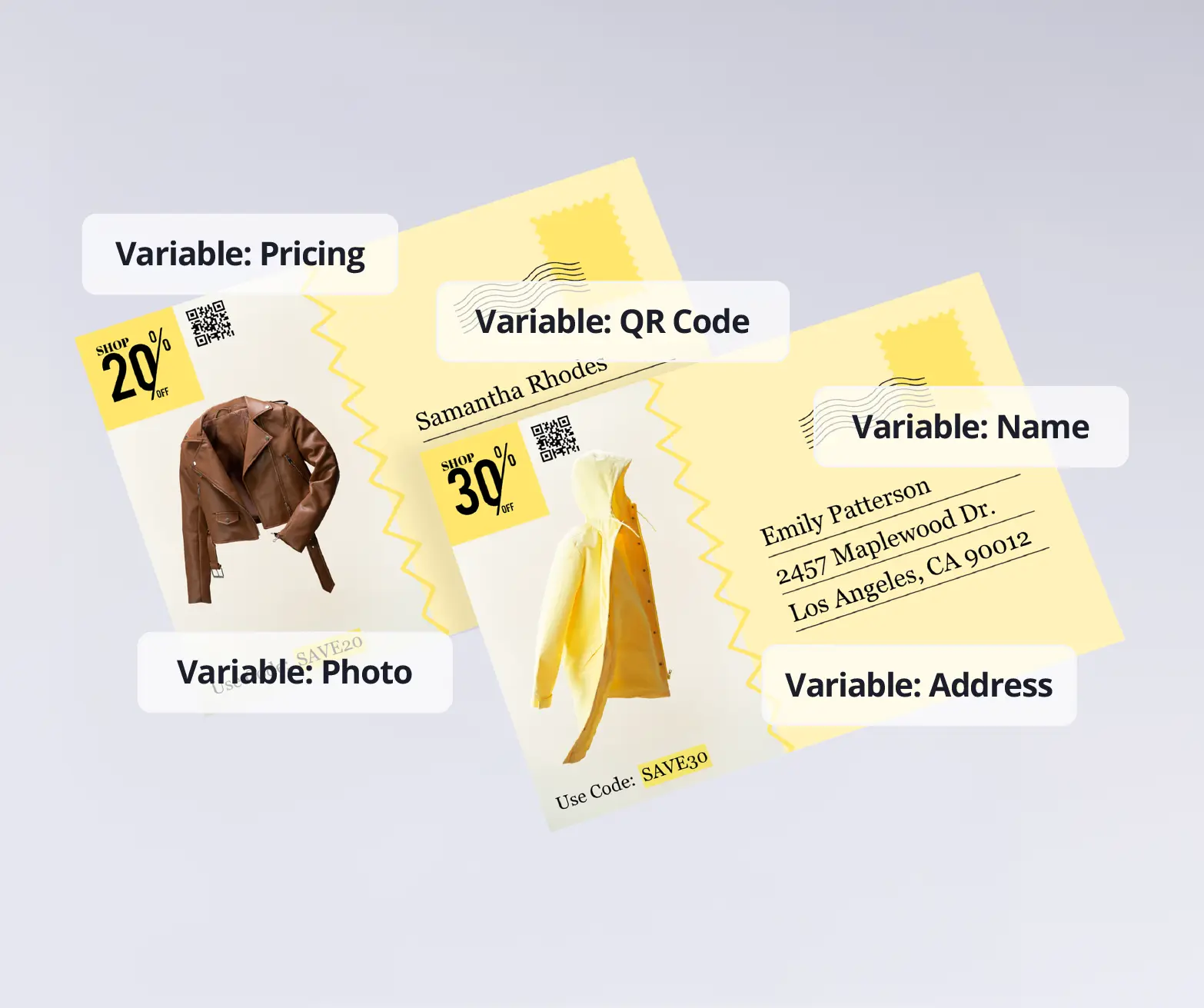
Link Your Variable Data Sources
-
Connect data sources via API to populate templates with variable text, images, or colors.
-
Use CRMs, DAMs, databases, QR and barcodes, or data stored in Design Huddle.
-
Leverage AI generated content to personalize print designs.
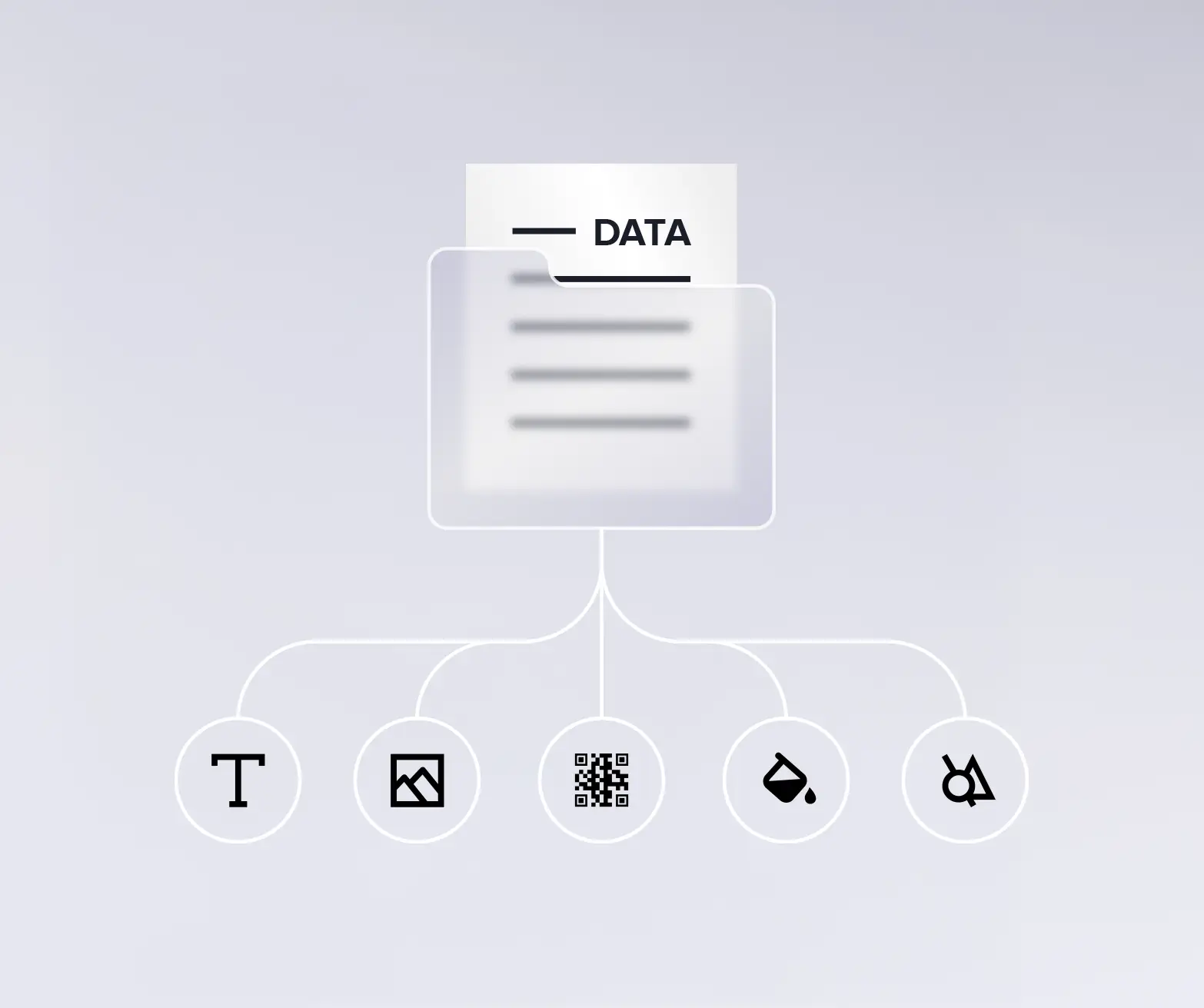
Validate Designs with AI or Custom Workflows
-
Ensure design quality with built-in AI image upscaling and custom JavaScript validation logic.
-
Instantly preview thumbnails of personalized designs before exporting.
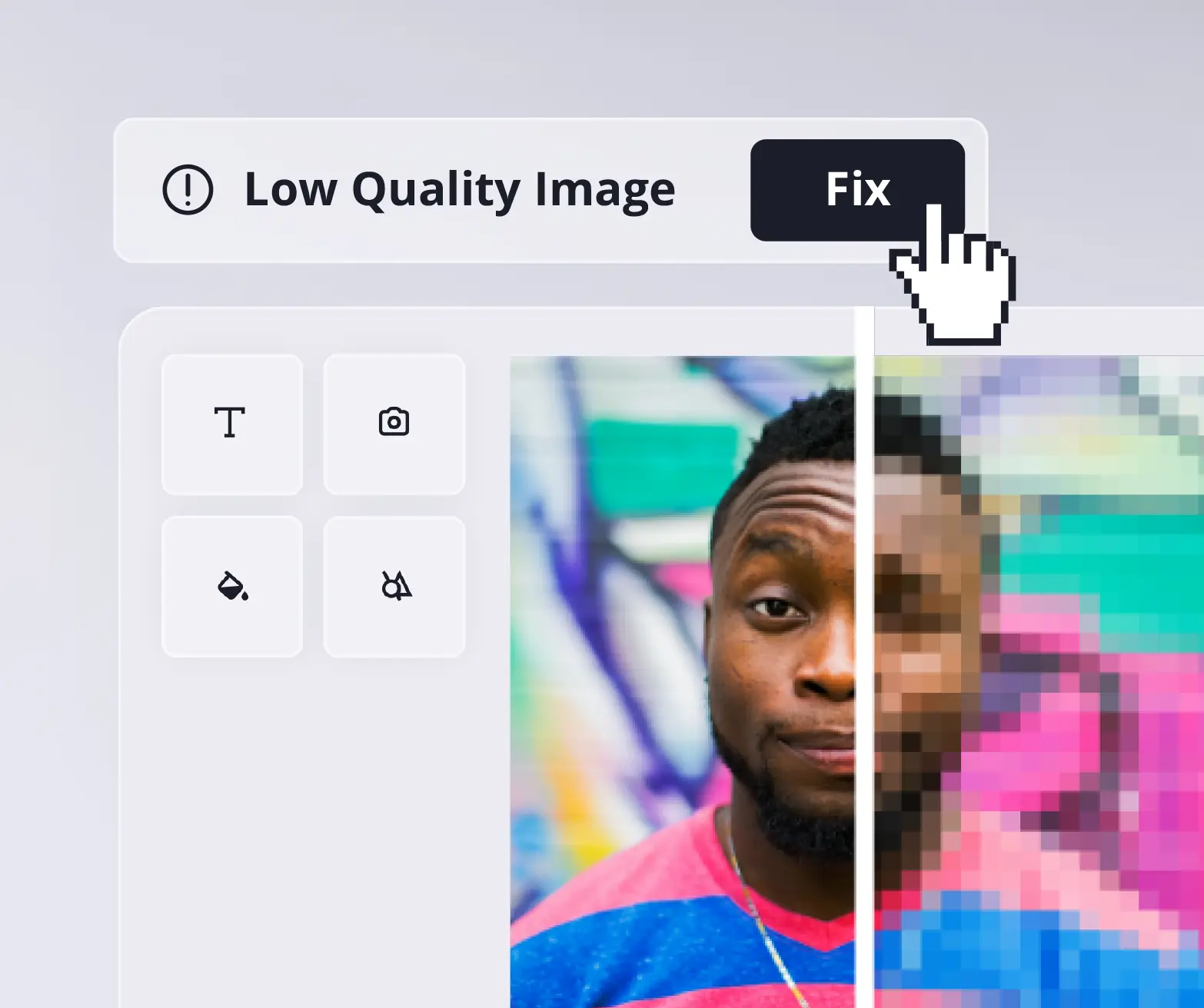
Export High-Volume, Personalized, Print-Ready PDFs
-
Generate layered, print-ready PDFs with support for CMYK, spot colors, bleed, and registration marks.
-
Our PDF exports are optimized for speed—faster and more scalable than legacy VDP solutions.
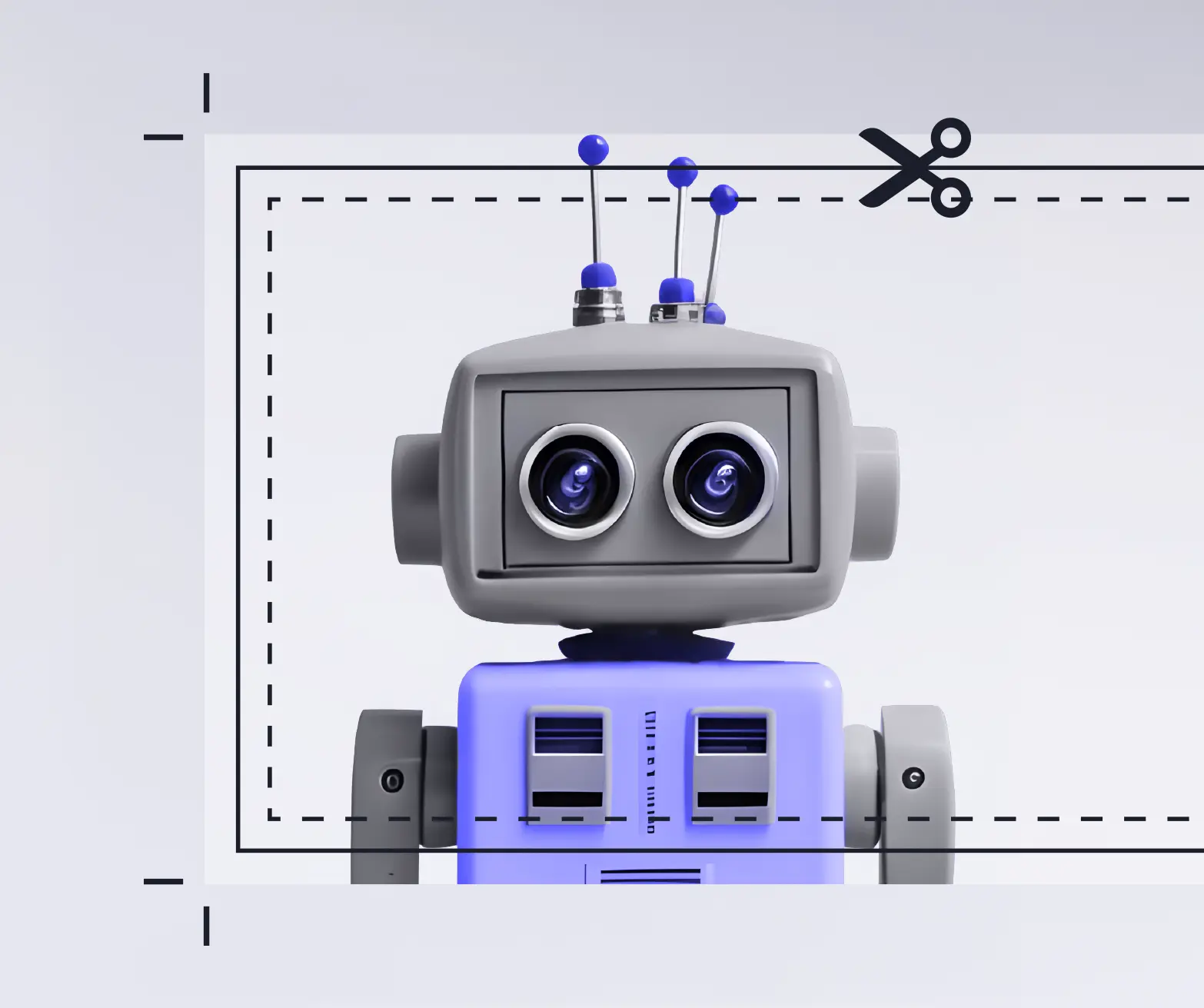
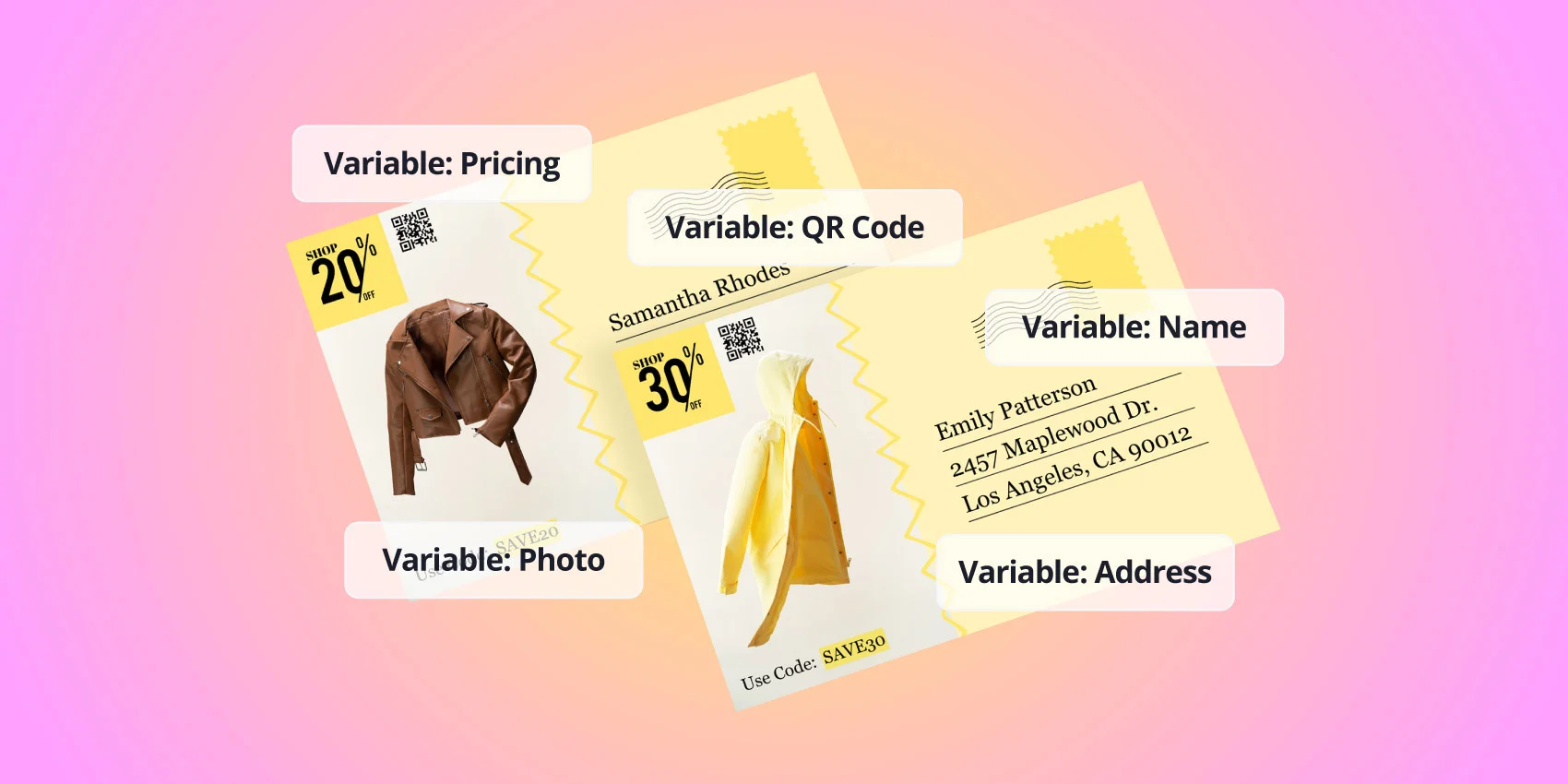
Variable Data Printing: Streamline Personalized Prints With Speed
Explore how Design Huddle's web-to-print software revolutionizes variable data printing, enabling personalized print production at scale.
Read the BlogVariable Data Printing FAQs
What is Variable Data Printing (VDP)?
Variable Data Printing is a form of digital printing where elements such as text, images, or graphics can be changed from one printed piece to the next using data from a spreadsheet or database.
What types of content can be personalized with VDP?
What are common use cases for VDP?
VDP is used in direct mail, event badges, personalized packaging, certificates, business cards, promotional materials, and more.
What file formats are used in VDP?
Typically, print-ready PDF files are used for output. Input data often comes from CSVs, Excel files, or databases, all via API.
Do I need coding skills to implement VDP?
Not always. Some platforms offer no-code or low-code solutions, while others require developer support to handle data integrations or validations.
How does VDP differ from mail merge?
While similar in concept, VDP is built for high-quality, print-ready outputs and supports complex visual customization beyond text replacement.
How does Design Huddle support Variable Data Printing?
Design Huddle allows you to create smart templates using variable placeholders (merge fields), connect a data source, validate designs, and export personalized, print-ready PDF files—all within a single platform.
What types of variables can I use in a Design Huddle template?
You can tag any text element or image
placeholder with a variable, such as
{First_Name},
{Job_Title}, or
{Logo}. These tags are
automatically replaced with data from your
source.
How do I connect my data source to Design Huddle?
You can connect a CSV, database, or API, translated to our API input requirements, to feed variable content into your templates. The platform maps data fields to your variable placeholders for automated replacement.
Can I preview personalized designs before exporting?
Yes. Design Huddle allows you to preview any number of variations to ensure accuracy and consistency across all outputs.
Does Design Huddle validate or upscale images?
Yes. You can use custom JavaScript for validation or leverage our built-in AI-based image upscaling to ensure high-resolution outputs.
What makes Design Huddle’s PDF export more efficient than other VDP tools?
Our export engine is optimized for speed, with highly parallelized batch job generation of print-ready PDFs. It’s faster and more scalable than traditional VDP workflows.
Do I need to be a developer to set up VDP in Design Huddle?
Not necessarily. Many features, including template creation and data tagging, can be done with no code. However, developers would be required to enhance workflows with API integrations, validation logic if needed, and processing the design export.